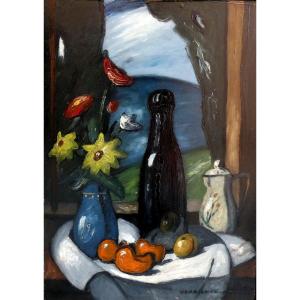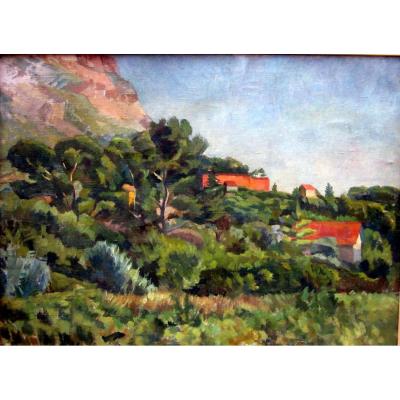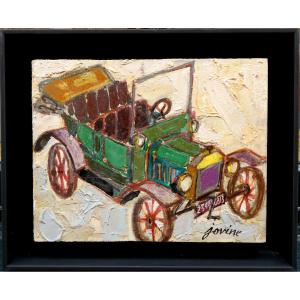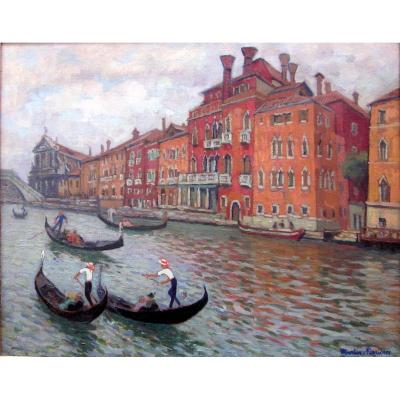The work, painted in oil on cardboard, is presented in a gilded frame with channels that measures 66 cm by 73.5 cm and 46 cm by 55 cm for the painting alone.
It depicts elegant women seated or leaning at the counter of a chic establishment, on the right a bouquet of flowers and a man in a black suit.
An atmosphere that can be found in certain works by Parisian masters of the time such as Degas or Van Dongen, with whom the artist rubbed shoulders.
In very good condition, the work is signed lower right.
The frame (period) could be restored or changed.
Son of a shoemaker from Bruges who wanted his son to succeed him, the young Charlesse nevertheless turned to painting.
Self-taught, he learned his craft from nature, and over the years he acquired a solid knowledge of the old masters through museum visits.
In the winter in the snow or in the summer in the sun, Verbrugghe took his portable easel to the Flemish countryside, very often to Damme, the homeland of Till Eulenspiegel.
After a three-month stay in Paris in 1905, he settled permanently in Montmartre the following year at 57, rue Philippe de Girard, in an apartment on the first floor of what was then a farm.
Even today, the layout of the premises allows us to imagine its original layout, although floors were added to the original building.
He had arrived at the foot of the Butte, in its heyday, with van Dongen, who came from Rotterdam.
He knew Monet, Renoir, Degas and also Utrillo, and he met Picasso.
However, Verbrugghe always remained faithful to post-impressionism.
A landscape painter, he rarely painted the streets of Montmartre.
Every year, he spent the summer in Bruges, which explains the large number of canvases featuring this sumptuous medieval Flemish city, the beguinages, the canals, the Dyver...
Italy provided him with many subjects, in Naples, Venice, Rome, San Remo.
He also liked to stay on the Côte d'Azur.
From the 1920s, he also participated in all the exhibitions and exhibited in various galleries: Marguy (1921), La Palette française (1922), and especially at the Galerie du Luxembourg (1921, 1922, 1924, 1927 and 1929-30);
Present at several Canvas Exhibitions, on the Place du Tertre (1952, 1954, 1968).
In Belgium, he showed his works in Bruges, Maldegem and Knokke-le-Zoute.
Verbrugghe had a contract with the Roussard Gallery since 1946.
In 1968, a major retrospective was held in Bruges (Garnier Gallery) and Montmartre (Roussard Gallery).
The catalog was prefaced by his childhood friend Maurice Genevoix, permanent secretary of the Académie Française, whom he had met in the 1920s at La Charité-sur-Loire.
It was also thanks to Charles Verbrugghe that Maurice Genevoix was able to publish his first book.
Editions Roussard is cataloguing his works with a view to publication.
Henri, one of his two sons, was also a painter, close to his father in painting, he signed Henri Steen.

















































 Le Magazine de PROANTIC
Le Magazine de PROANTIC TRÉSORS Magazine
TRÉSORS Magazine Rivista Artiquariato
Rivista Artiquariato